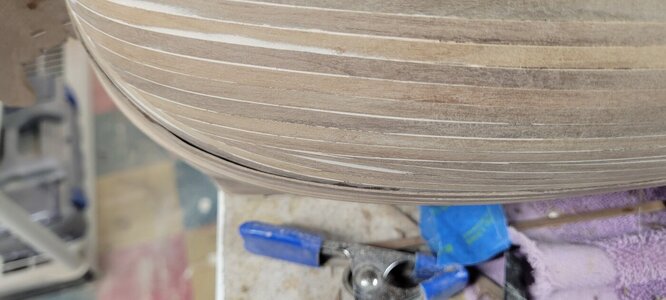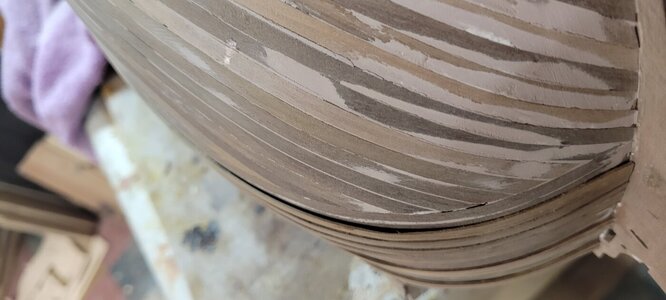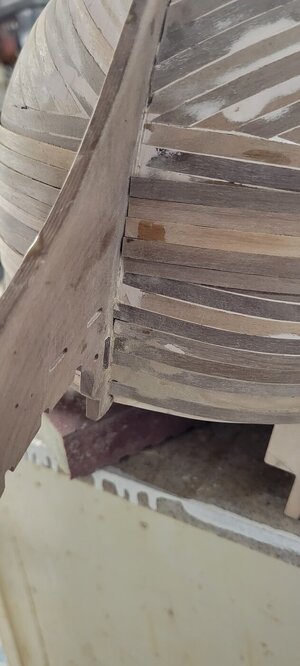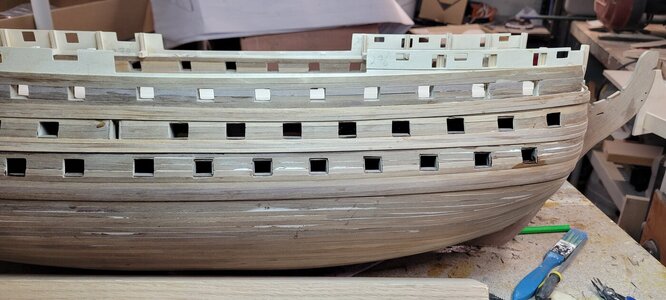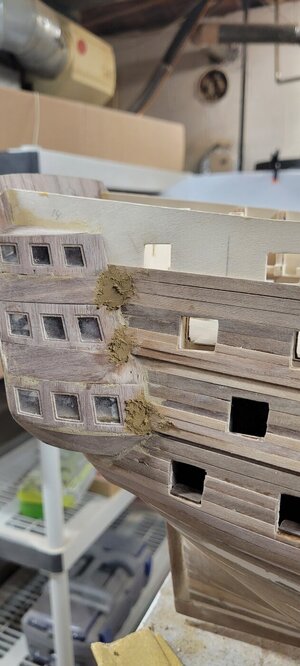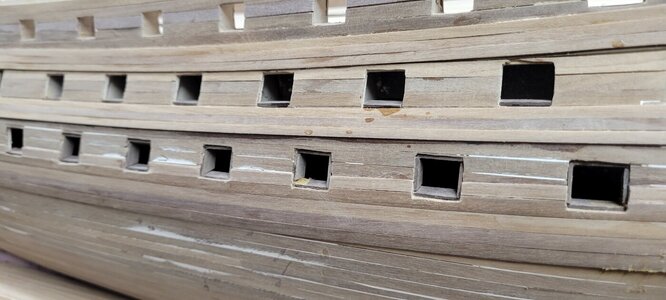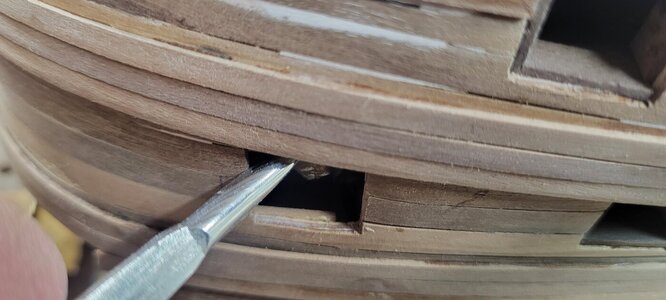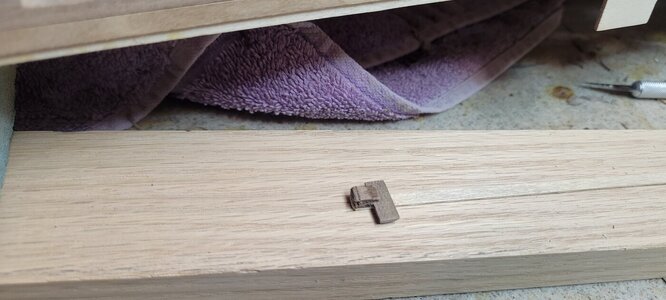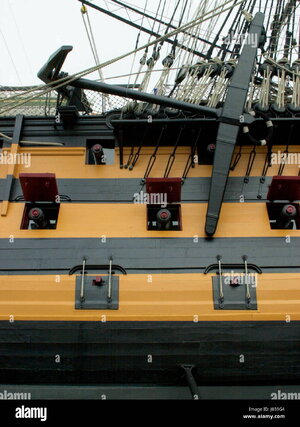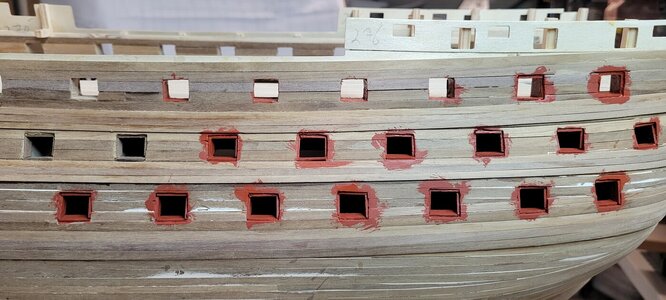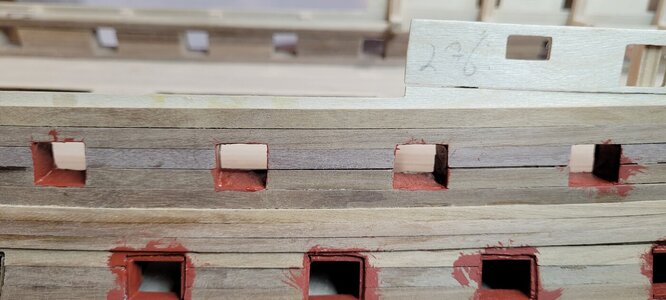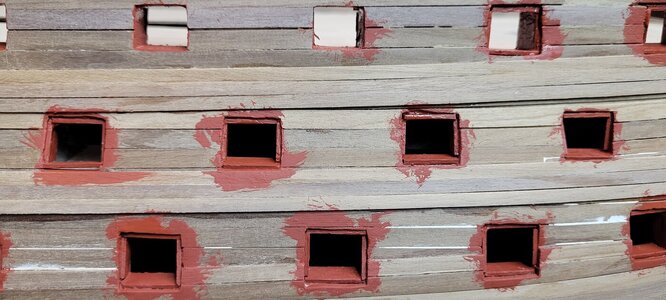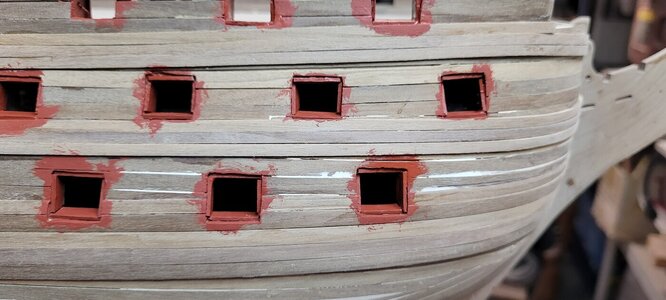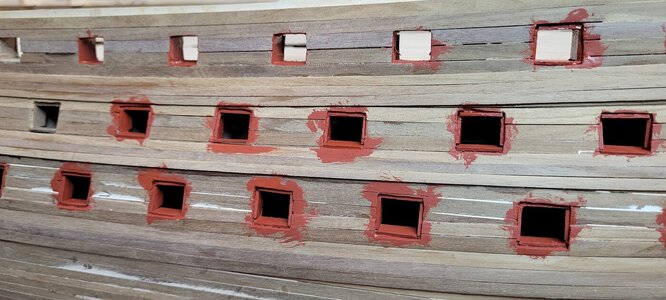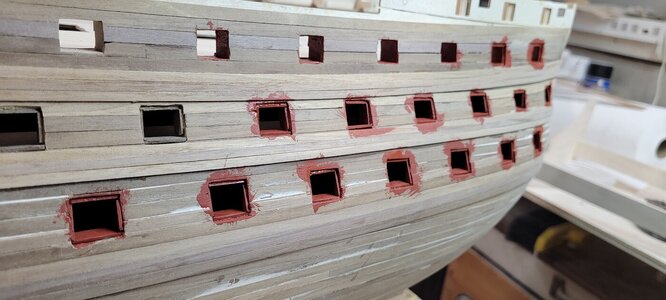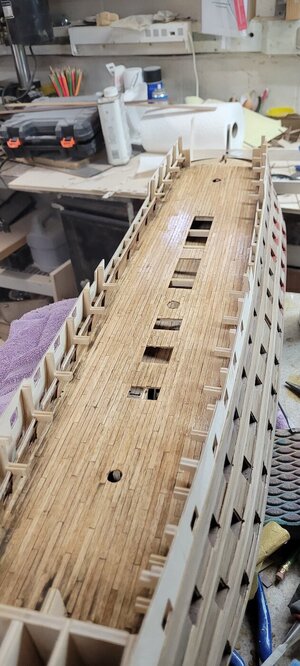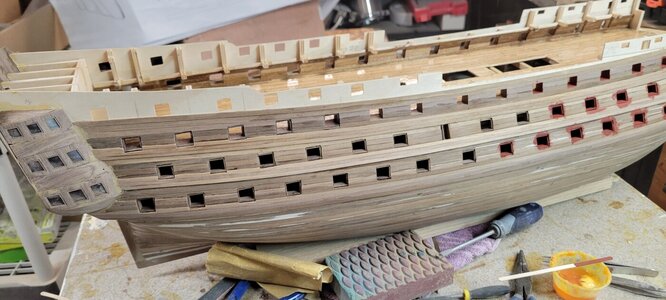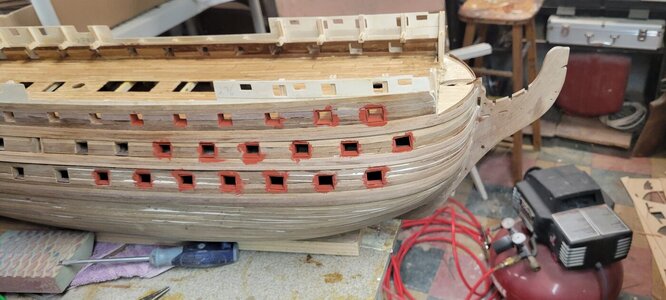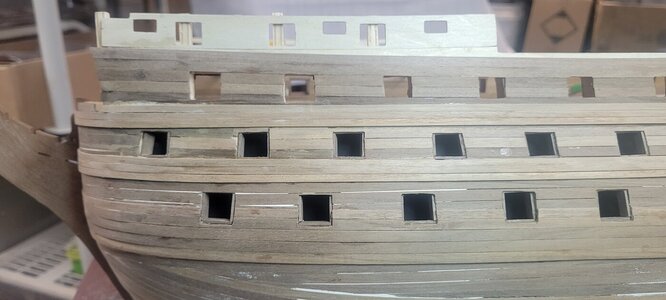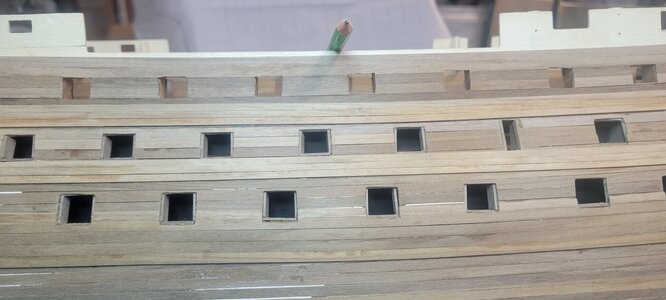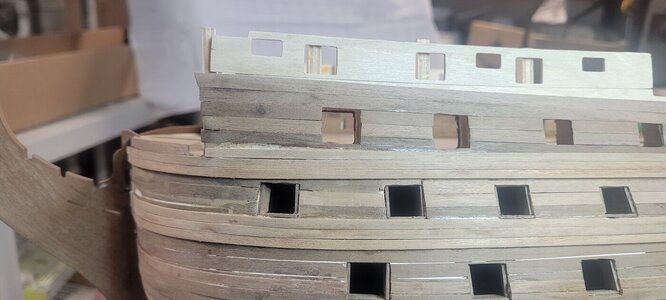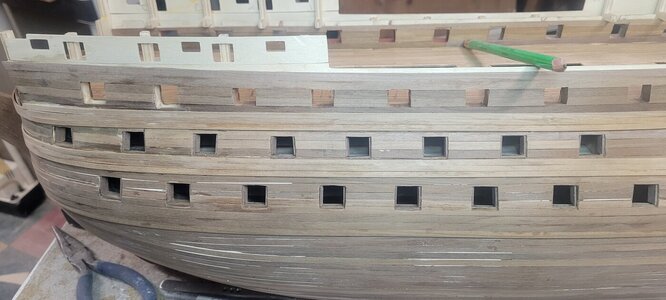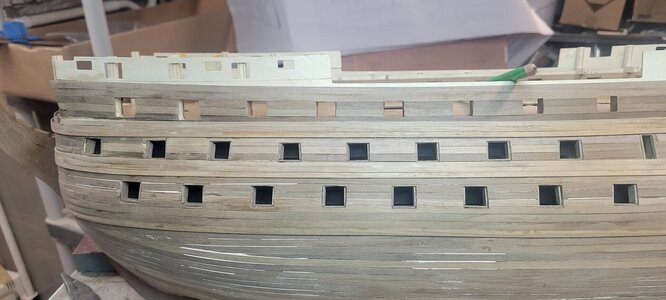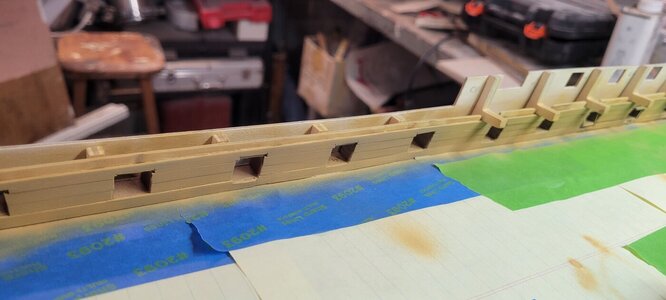- Joined
- Oct 21, 2022
- Messages
- 286
- Points
- 238

Earlier this morning, I applied some wood putty into areas that I want to smooth out.
The putty is pretty tough stuff and I'll have to put another coat on this week.
It looks terrible, but after it dried, I was able to sand a lot of it out. I know there other pieces that get installed on the quarter galleries, so I have some wiggle room with poor fitting planks. I think in the end I can use a flat exacto blade like a mini trowel and apply a final top coat of putty to completely smooth out the various fittings.
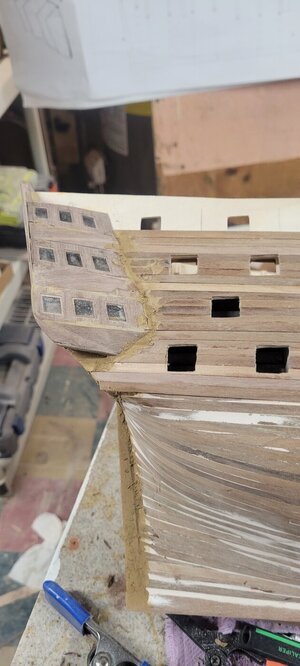
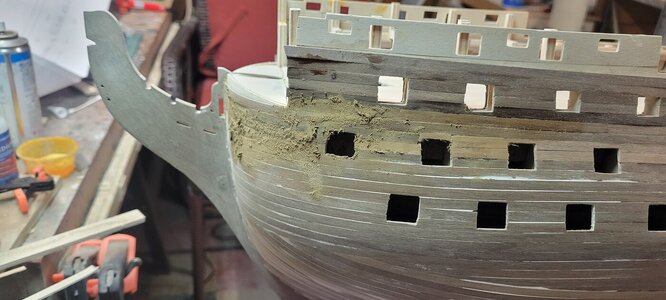
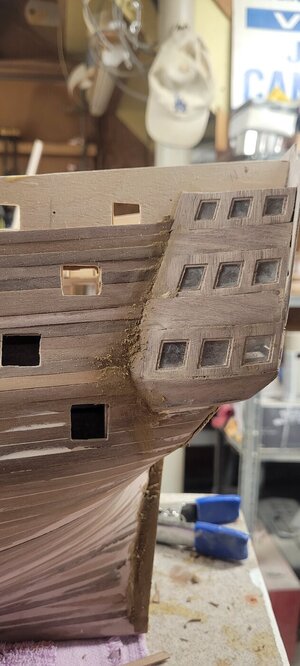
Off by a mm.....

I short cut one of the wales, but I believe the panels that are to be installed for the side windows will fill this gap, otherwise, I will add stealers and smooth it all out. The windows are just dirty from all the sanding. I can get a q-tip inside through the back gallery and clean them before I finish the stern.
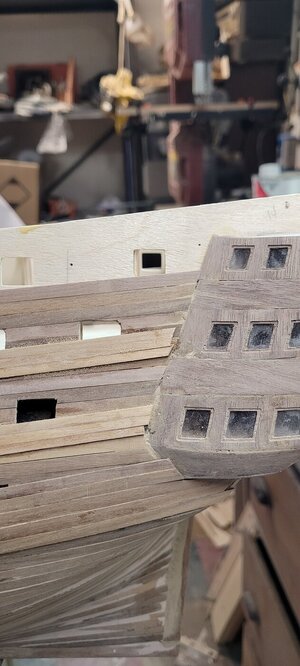
I took these photos of the wales from the bottom looking up to check for errors and bad fit.
I will have to do something to fill these voids before painting and/or installing the copper plates.
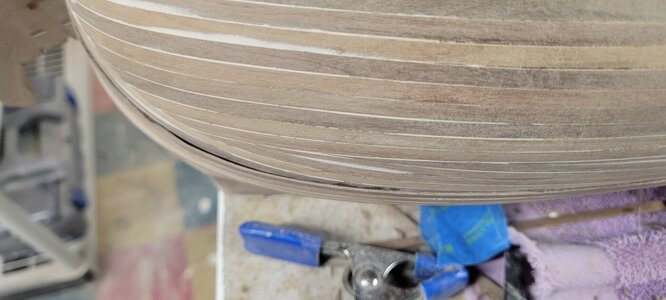
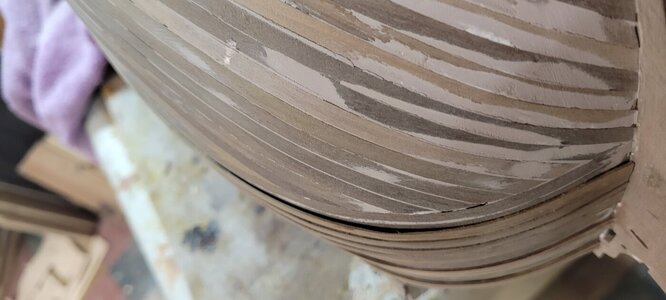
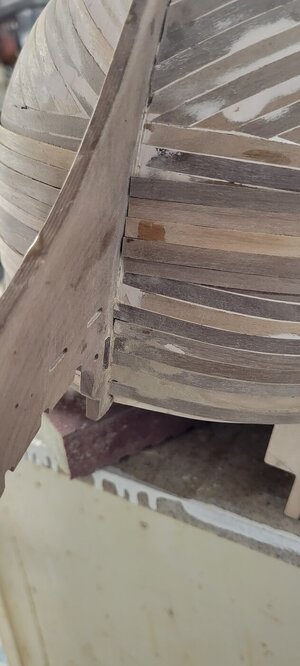
The putty is pretty tough stuff and I'll have to put another coat on this week.
It looks terrible, but after it dried, I was able to sand a lot of it out. I know there other pieces that get installed on the quarter galleries, so I have some wiggle room with poor fitting planks. I think in the end I can use a flat exacto blade like a mini trowel and apply a final top coat of putty to completely smooth out the various fittings.



Off by a mm.....

I short cut one of the wales, but I believe the panels that are to be installed for the side windows will fill this gap, otherwise, I will add stealers and smooth it all out. The windows are just dirty from all the sanding. I can get a q-tip inside through the back gallery and clean them before I finish the stern.

I took these photos of the wales from the bottom looking up to check for errors and bad fit.
I will have to do something to fill these voids before painting and/or installing the copper plates.









